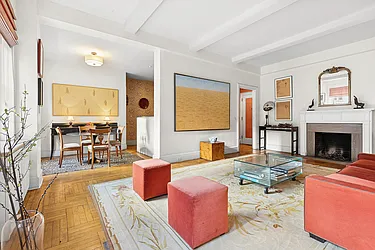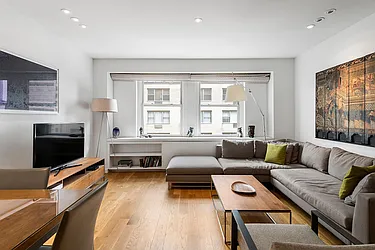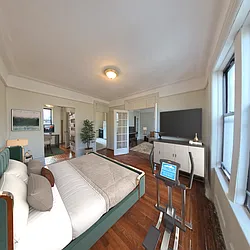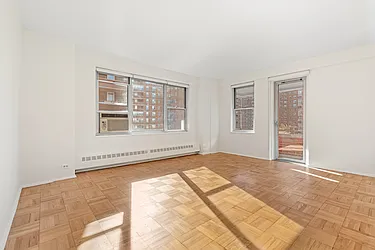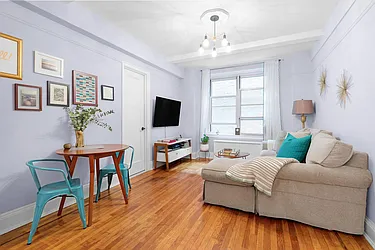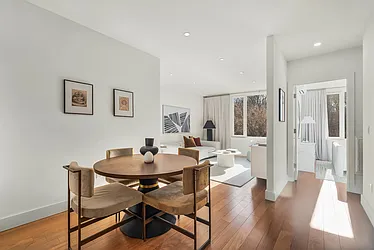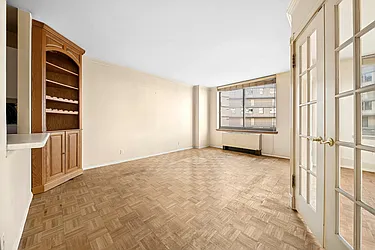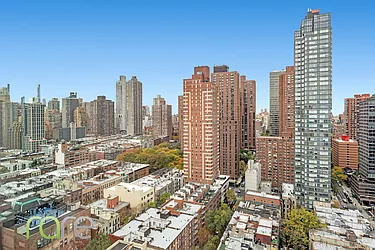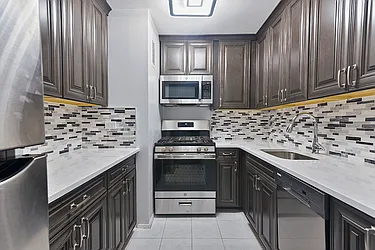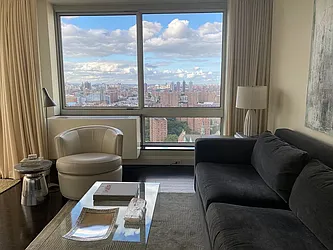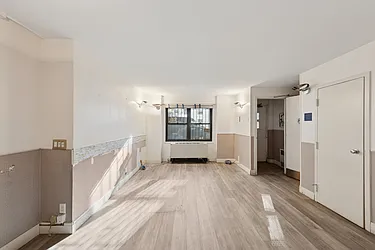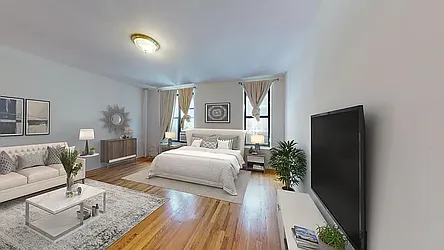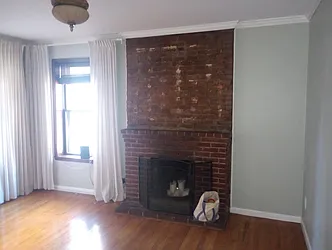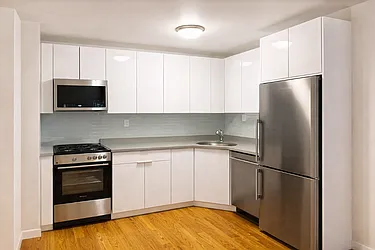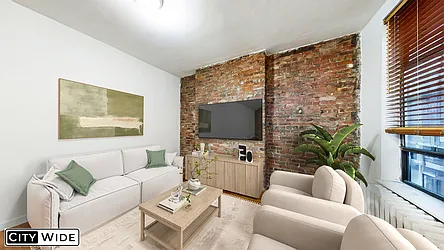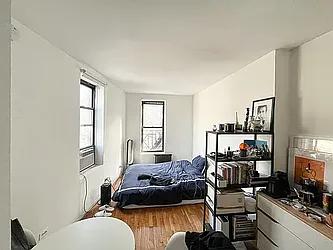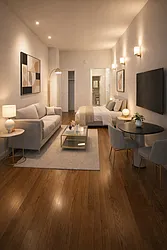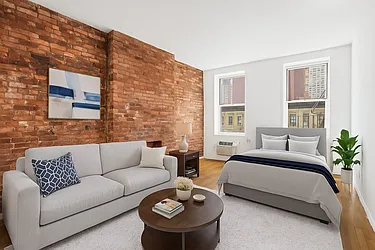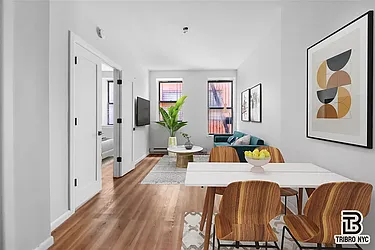After years of supply outpacing demand for Manhattan’s priciest homes, we’re seeing a shift in the sales market. The luxury tier, as these high-priced homes are collectively called, is now driving the rebound of NYC home prices, according to our August 2021 Market Reports.
The number of contracts signed for homes across all price tiers has cooled off from the record highs we saw this spring. But that doesn’t mean the market is heading into another slowdown. In fact, the opposite is true: The huge inventory of Manhattan luxury real estate is finally shrinking. The number of homes for sale is the lowest it’s been since June 2020 in Manhattan, and the median asking price rose for the second month in a row.
Table of Contents
- Manhattan Luxury Real Estate Drives Growth for NYC Home Prices
- Rents Are Also Rising for NYC Homes With Luxurious Amenities
- What Buyers and Renters Need to Know
- Manhattan Sees Lots of Luxury Sales and Leases Signed
- Brooklyn Rents Are Nearly Back to “Normal”
- Queens Market Remains Stable Across Sales and Rentals
Manhattan Sales Under $1M on StreetEasy Article continues below
Manhattan Luxury Real Estate Drives Growth for NYC Home Prices
The median asking price in Manhattan hit $1,425,000 in August — the highest since June 2020. The luxury tier is driving this price growth. At StreetEasy, we define luxury as the top 20% of the market. According to the StreetEasy Price Index, prices remained stagnant or fell in all but the most expensive tier of homes. Prices in the luxury tier grew 2% year-over-year. That’s the biggest year-over-year increase since March 2016.
While prices are rising, buyers at this tier are still negotiating discounts. Luxury sellers got 90% of their original asking price in August, the lowest of any price tier in Manhattan. In other words, the typical $3.8 million home (the threshold for the top 20% of the market) is selling for $400K less than its original asking price. With the number of contracts still being so high for these homes — 309 luxury contracts were signed in August — this shows that buyers are successfully negotiating with sellers.
Rents Are Also Rising for NYC Homes With Luxurious Amenities
In the rentals market, we’re seeing a similar scenario. Rents are rising fastest in the luxury tier, or the top 20%, of the market. Prices in buildings with high-end amenities are also rising more quickly than those without any extra amenities (like a doorman, gym and/or pool). Between March and August 2021, when the rentals market started picking up steam after COVID-related slowdowns, rents for listings in buildings with amenities rose by 6%. Meanwhile, rents in buildings with no amenities rose by 4%.
Buildings with high-end amenities are also more likely to offer concessions in the form of free months of rent. But these concessions have been disappearing slowly in all boroughs analyzed. In August, 22% of Manhattan rentals advertised a concession on StreetEasy, falling for the fifth month in a row. Last August, 36% of Manhattan rentals were offering at least one free month of rent.
According to StreetEasy economist Nancy Wu, this shows that NYC’s rentals market recovery is happening faster in buildings that offer fancier amenities. Buildings without amenities are not far behind, though.
Manhattan Rentals Under $3,000 on StreetEasy Article continues below
What Buyers and Renters Need to Know
“All of the data we’re seeing points to an uptick in demand for homes in New York City,” says Wu. “That’s reassuring news for both landlords and sellers, as many were unsure what to expect as the delta variant continued to take hold. On the sales side especially, it’s important to remember that we’re talking about the most expensive tier of homes driving the growth in NYC home prices. For Manhattan buyers, if you don’t have a luxury budget, know that prices are staying relatively stagnant. There are still plenty of options available across the city to find a great deal this fall home shopping season.”
Manhattan Sees Lots of Luxury Sales and Leases Signed
Manhattan luxury real estate sales were robust in August. The month saw 309 luxury contracts signed in Manhattan, the most out of any price tier in the borough. By contrast, in the bottom quintile (the most affordable tier of homes), there were 121 contracts signed.
For all home in the borough (including the luxury tier), the overall median asking price in Manhattan rose to $1,425,000 in August. Prices hit their pandemic low in December 2020 at $1,325,000. Current prices are still lower than levels seen at the very beginning of the pandemic (March 2020), when the median asking price was $1,550,000.
As far as for-sale inventory goes, there were 8,909 homes for sale in Manhattan during the month of August. It was the fourth consecutive month in which inventory dropped in the borough. Inventory is on par with what is typically seen during the summer season in Manhattan. For example, in August 2019, there were 8,501 homes on the market.
On the rentals side, Manhattan’s median asking rent rose to $3,100 in August. That marks the fifth consecutive month with an increase in rents. However, rents are still $400 lower than their pre-pandemic high of $3,500.
At the same time, rental inventory continued to plummet. There were 18,569 Manhattan rentals available in August. That’s the lowest it’s been since April 2020, when the pandemic first began. In August 2019, the last “typical” summer rental season, there were 21,248 Manhattan rentals on the market.
Brooklyn Rents Are Nearly Back to “Normal”
As far as contracts signed go in Brooklyn, there was not a stark difference across price tiers in the borough. There were 164 pending sales in the luxury tier (top 20%) in Brooklyn, and 167 in the middle-priced tier.
Across the borough, there were 807 total pending sales in August. In August 2019, the last summer home shopping season before the pandemic, there were 528 sales.
Pending sales are staying high, and prices remain stagnate. The median asking price in Brooklyn in August was $925,000 — unchanged from July 2021. Last August, the median asking price was $949,000.
On the Brooklyn rentals market, median asking rents rose to $2,650, nearly reaching pre-pandemic highs. This was the fourth consecutive month of rent increases in the borough. And while rents rose, inventory continued to come down. There were 15,341 rentals available in the Brooklyn market in August. This is down 41% from just one year ago, at the height of the pandemic, when 25,914 rentals were available.
Queens Market Remains Stable Across Sales and Rentals
The trend of contracts signed in Queens was similar to Brooklyn in that it was spread evenly across all price-tiers. Queens saw 102 luxury pending sales, and 67 contracts signed in the most affordable tier of homes.
Across all price ranges, the median asking price in Queens held steady from July to August at $599,999. Last August, the median asking price was $649,000.
The number of for-sale homes in Queens has remained relatively stagnant throughout the pandemic. It did not drop at the same pace as Manhattan and Brooklyn. There were 3,740 homes on the market in August. That’s on par with what was available in August 2019 (3,322 homes).
On the rentals side, Queens asking rents reached $2,250 in August, creeping their way back up toward the pre-pandemic high of $2,395. Rental inventory in Queens is coming down, but not nearly as quickly as the levels seen in Manhattan and Brooklyn. There were 5,742 Queens rentals available in August, down from the pandemic high of 7,915 available in October 2020.
View all StreetEasy Market Reports for Manhattan, Brooklyn, and Queens, with additional neighborhood data and graphics. Definitions of StreetEasy’s metrics and monthly data from each report can be explored and downloaded via the StreetEasy Data Dashboard.
Editor’s Note: In March 2020, New York City’s housing market temporarily froze as the COVID-19 pandemic began in the U.S. in earnest. Stay-at-home orders were widespread. Year-over-year data comparisons over the next few months will be made against both the COVID freeze of the spring, and subsequent housing recovery that began last fall. Assuming 2021 is more typical of a “normal” year in housing than 2020 was, with little to no activity in the spring and summer, we expect many of our year-over-year measures will show large gains over last spring and summer. We urge you to use caution in extrapolating too much from year-over-year measures in coming months, and we will always try to provide appropriate context to anchor reported changes in metrics to what is normal or expected.

